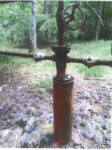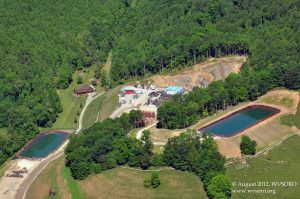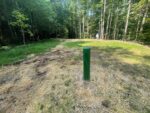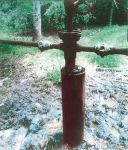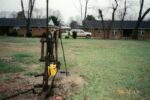- Like
- Digg
- Del
- Tumblr
- VKontakte
- Buffer
- Love This
- Odnoklassniki
- Meneame
- Blogger
- Amazon
- Yahoo Mail
- Gmail
- AOL
- Newsvine
- HackerNews
- Evernote
- MySpace
- Mail.ru
- Viadeo
- Line
- Comments
- Yummly
- SMS
- Viber
- Telegram
- Subscribe
- Skype
- Facebook Messenger
- Kakao
- LiveJournal
- Yammer
- Edgar
- Fintel
- Mix
- Instapaper
- Copy Link
Introduction.
The principle provisions of HB 4268 are in a new Chapter 37B of the State Code that includes the “Co-tenancy Modernization and Majority Protection Act” (the “2018 cotenancy statute”). It goes into effect June 3, 2018. Before the passage of the cotenancy statute, the law provided (in effect) that if ownership of a mineral tract was shared by more than one person, the driller had to get a lease signed by each and every owner of an interest in that mineral tract. After the 2018 cotenancy statute takes effect on June 3, 2018, if there are more than 6 owners, the driller only needs to get the signatures of the owners who own a total of 75% of the shared interest in the mineral tract. (A copy of the new law can be found here.)
This web page is only about the effect of the 2018 cotenancy statute on surface owners –and what they should do if a driller wants to put a well pad, road or other surface disturbance on their land. The 2018 cotenancy statute can also make a big difference for the mineral owners of small shares of mineral interest in a mineral tract. We will have another page that explains what the 2018 cotenancy statute means for mineral owners.
There are three significant benefits for surface owners in the 2018 cotenancy statute. First, there will be a few less well pads because the bill will result in some longer horizontal well bores. Second, signing bonus money and the first seven years of royalty money that cannot be paid to mineral interest owners because they are unknown or unlocatable will go to plug the thousands orphaned “abandoned” wells scattered across the State — and after seven years that money and the mineral interests can go to the surface owners. Third, and most importantly, if the driller is using the 2018 cotenancy statute to drill a well, then the well pad and roads, etc. needed to drill that well cannot be placed on a surface owner’s land without the surface owner’s consent!
The drilling of horizontal shale wells generates enormous amounts of money — money in amounts that the West Virginia’s are not use to dealing with. There is enough money to do it right environmentally and to respect the rights of surface owners. And if surface owners are willing to agree to the use of their surface for drilling horizontal wells, there is enough money to compensate the surface owners, not with an amount that the use of the surface was worth to the surface owner before the driller showed up, but to compensate them with an amount of money that the use of the surface owner’s land is worth to the driller. Hundreds of thousands of dollars — maybe more.
These three benefits to surface owners in the 2018 cotenancy statute will be explained below. The third is most important.
The ability to drill longer well bores means fewer well pads are needed.
The first benefit of the 2018 cotenancy statute is that we think it will lead to some reduction in the number of well pads put on the surface. As this is written in 2018, horizontal well bores can be drilled at least a mile and even two or three miles long. Previously, what often stopped the driller from drilling well bores that long is that the horizontal well bore would run into a tract of land where the driller does not have signatures on leases from all the owners of all the shares of ownership of the mineral interest in the tract. Even if the driller gets up to 90% or 95% signed up, the driller could not drill into the tract without going through a long and expensive partition proceeding in Circuit Court, which involves including even the people who had signed leases in the lawsuit. Now the drillers will be able to keep drilling longer bores into the next further mineral tract if there are more than six owners of the tract, and they have signatures of the owners of 75% of the mineral interests in that tract.
If drillers can drill longer well bores from each of their wells, the longer well bores produce more gas through the one well on the surface. So the drillers can get more gas from fewer wells, and (assuming the same demand for gas) need fewer well pads. We do not expect a huge reduction of the number of well pads, but we do expect some impact.
Money due to unknown and unlocatable mineral owners will be used to plug orphaned wells; and after seven years, the money and mineral interest will go to the surface owners.
The second benefit of the 2018 cotenancy statute for surface owners has to do with what we call “orphaned” wells. Many of these wells are located on surface owners’ land all over the state.
We will start with some background. At the end of an oil or gas well’s useful life, an oil and gas well needs to be plugged. If this doesn’t happen, pollution from the surface (waste from cow pastures for example) can leak down the well bore and into the groundwater that supplies drinking water for wells and springs for humans and animals. Also salt and iron water from deeper water tables below can travel up the well bore into the potable groundwater table. Also, oil and gas can leak between oil and gas formations with different pressures and other productive formations such as coal. Also, oil and gas can leak up to the surface and out into the air and onto the ground, or travel to other unplugged wells and cause these problems, or make things worse around the second unplugged well. Explosions are not unknown. (Click here to learn more about how a gas well is drilled and cased and what can go wrong.)
Do these things happen every time? No. But they happen. And what is true every time is that the land owned by the surface landowner is devalued because it has the unplugged well on it with the potential to create pollution problems on the land.
“Plugging” a well is not “capping” a well or just putting a stopper at the top of the well. Some of the concentric layers of metal pipe casing that run down the vertical well bore need pulled out. Then the well needs to be filled up with clay, and as that is being done, cement needs placed between formations of different materials or just different pressures.
Drillers do not like to plug wells. It costs money at a time when the well is not making much, if any, money, and the driller probably has not been saving the money necessary to plug it. Also the driller may be trying to hold the old lease that authorized the drilling of the well that needs plugged. The driller wants to hold the lease so the driller will not have to hunt up all the owners of all of the shares of the mineral interest and pay another signing bonus, or maybe even have to increase the royalty paid to drill another well on the leased tract. Plugging all of the wells on a lease definitely ends that lease (though if the wells are producing poorly and not “producing in paying quantities” the lease has probably already ended if the mineral owner wanted to do something about it.
If the well does not produce for a year, under the law it is considered an “abandoned well” and the driller is supposed to plug it (unless it is producing “free gas” for a residence or unless the driller has established a “bona fide future use” for the well with the DEP, which is not an easy thing for the driller to do). The State is supposed to make the driller plug it if the driller will not do so voluntarily. However, for the reasons stated previously, the drillers resist plugging it, and the state’s enforcement of plugging is lax because the size of the problem, and because the drillers’ statutory performance bonds are so low they will not cover the cost of plugging a driller’s wells even if the state forfeits the bonds (and that in effect puts the driller out of business so the driller will never plug the well).
As this is being written, there are over 12,000 such statutory ”abandoned” wells. The drillers have been so neglectful in plugging them, and the state’s enforcement has been so lax, that 4,000 of those abandoned wells are what we unofficially call “orphaned” because the driller has gone out of business. So there is no responsible driller/operator and no bond of that operator to plug the well.
Before the passage of the 2018 cotenancy statute, the only money the State had to plug these orphaned wells came from a small fee that the drillers pay when they apply for new permits, plus the very few bond forfeitures the state does. At most all of that generates only enough money to plug 4 or 5 orphaned wells a year! And the Marcellus and other horizontal shale well drilling tsunami is going to be put more and more conventional/vertical well drillers out of business resulting in more and more orphaned wells.
What does this have to do with the 2018 cotenancy statute? Many times when the horizontal well drillers cannot get the owners in all the interest in a tract of mineral land, it is because the ownership of a mineral tract of land has passed down through several generations. One result is that the mineral interest in a tract of land is owned by dozens or even hundreds of heirs, and many of them have moved out of state, changed their names, or otherwise have become unknown or unlocatable.
The 2018 cotenancy statute requires the operator to send money due to unknown or unlocatable mineral owners to the State Treasurer’s office. The State Treasurer’s office holds the money for 7 years to give unknown or unlocatable mineral owners a chance to show up and claim their share of the signing bonus and royalties held to date and into the future. If the mineral owners do not show up, the 2018 cotenancy statute has the Treasurer give the money to the West Virginia Department of Environmental Protection to plug orphaned wells! (For political reasons the Legislature also gave half of that money to a fund for the state Public Employees Insurance Agency. However, we hope they will find other solutions for the PEIA crisis before then, and put all of the money towards plugging orphaned wells.)
After seven years, the 2018 cotenancy statute provides that the owner of the surface tract above the mineral tract can go to court and get ownership of the unknown and unlocatable mineral owners interest in the mineral tract, and then get future royalties. That is a big deal. WV-SORO believes, and even many drillers agree, that severing the ownership of the surface from the ownership of the minerals was a bad idea. WV-SORO supports every effort at reuniting the surface with the minerals.
Orphaned wells are a problem. Split estates (where ownership of the surface and minerals are separate) are also a terrible idea. It is good that the 2018 cotenancy statute attempts to address both of those problems.
If the driller uses the new cotenancy statute, the driller has to get the surface owner’s consent to put the well pad or any other surface disturbance on the surface owner’s land!
The third and most important provision of the 2018 cotenancy statute is that the driller must get the agreement of the surface owner to locate the well pad, roads and other disturbance on the surface owner IF the surface owner’s land will be used for a well pad or road, or other surface disturbance , and if the 2018 cotenancy statute was used in order to drill into/drain a mineral tract from that surface owners land. The driller would have used the 2018 cotenancy statute (if the tract had more than six owners) and the driller could only get 75%, but not all, of the owners of the shares in the mineral tract to sign leases.
Note that if the surface owner also owns the minerals and signed a lease that allows use of the surface for horizontal drilling into neighboring tracts (or if a previous owner did that), or if the surface owner (or the surface owner’s predecessor) already signed a surface use agreement, this provision of the 2018 cotenancy statute does not apply. . But the existing lease or surface use agreement must be for horizontal drilling, not just a general surface use provision! The statute says, “[T]his subsection shall not require surface owner consent for tracts on which surface disturbance does not occur or tracts otherwise subject to an existing surface use agreement, oil and gas lease which includes surface use rights, or other valid contractual arrangement in which the owner has granted rights to the operator to use the surface for horizontal drilling or any other use for which this article is used.”
WV-SORO takes the position that the driller already, without the 2018 cotenancy statue, has to get the surface owner’s agreement/consent to use the surface owner’s land to drill a well horizontally into neighboring mineral tracts. It is our opinion that when the ownership of the surface was severed from the ownership of the minerals (or when an old lease was signed before the severance) the owner of the minerals got the right to reasonable use of the surface to get the minerals out, but only from the mineral tract under the surface tract and not from neighboring mineral tracts using horizontal drilling. We believe it would be trespass for that to happen. (See our views on this web page.) (We also believe that even if the well pad was only going to be used to drill a horizontal well into the mineral tract underlying the surface tract, we still believe that the driller would need the agreement of the surface owner because the degree of disturbance for horizontal shale drilling and high volume hydraulic fracturing was not “in the contemplation of the parties” at the time when the ownership of the surface was separated from the minerals.) You can read about that and other ways a surface owner might be able to keep the driller from coming onto their land here.
However, even though we believe this is already the law, the West Virginia Supreme Court has not made a final ruling on the issue (so some of the drillers will still try to barge onto a surface owner’s land without their agreement.) Because the Supreme Court has not ruled on that issue, WV-SORO successfully argued to the Legislature that this protection for the surface owners should be included in HB 4268, the 2018 cotenancy statute, and it was. If the Legislature was going to pass a statute that lets the driller use a surface tract for a longer period of time to drill a longer horizontal well bore, causing more truck traffic, and more noise, light, and air pollution, etc. we argued that the Legislature should require the driller to get the agreement of the surface owner for the use of their surface — and they did.
Before the 2018 cotenancy statute takes effect on June 3, 2018, if you are a surface owner, and if a driller comes to you and says they are going to put a well pad on you, you could say: First, you (the driller) do not have a right to use my surface to drill on the neighboring mineral tracts, and second, you (the driller) do not have a right to use my surface because what you want to do on my surface was not in contemplation of the parties at the time the surface and minerals were separated (or at the time an old lease was signed when the mineral and surface were owned by same person). Those are good arguments but you may have to take the driller to court because the West Virginia Supreme Court has not yet made that clearly the law in West Virginia, and second, because the driller could try to say that this much use of your surface was contemplated.
However, after June 3, 2018, when the 2018 cotenancy statute takes effect, if you are a surface owner, in addition to the arguments above, you can now say: If you (the driller) are going to use my surface to drill a horizontal well bore into a tract of minerals or if you (the driller) are going to include a tract of minerals in a unit being drained by a well you want to drill on my property, and if you used the 2018 cotenancy statute to get the permission to drill the well or develop that tract, then you (the driller) have to get my (the surface owner’s) agreement/consent. If the driller can’t get the surface owner to agree, the driller will have to move the well pad, road etc. Or the driller will have to pay the surface owner the hundreds of thousands of dollars that the use of the surface owner’s land is worth to the driller.
Some drillers may try to argue that the surface owner’s consent or agreement is needed under the 2018 cotenancy statute only if the statute is used to drill into the mineral tract directly underlying the surface being used for a well pad or road, etc. We believe that the new statute is not a model of clarity, but that it applies if the surface owner’s land is going to be used not only for the mineral tract directly under the surface owner’s land, but also if the 2018 cotenancy statute is used to develop a mineral tract at the end of a horizontal well bore far away from the underlying tract. We believe that because that makes sense. If a driller can drill a longer horizontal well bore because the driller can drill into a mineral tract at the end of the well bore and keep on going, then the driller will be spending more time, using more trucks, causing more noise, light, and air pollution to drill the longer horizontal — and all that is happening on the surface owner’s land. So the surface owner’s agreement should be required for imposing that extra burden or the Legislature is taking away a surface owner’s property rights.
We also believe that it is true because of the legislative history/intent as the bill was passing through various committees and houses of the Legislature. Here is document that explains the legislative intent and why we think we are right.
Based on this, we strongly believe our interpretation is right, and after the 2018 cotenancy statute takes effect the driller will have to get the surface owner’s consent or agreement to put a well pad, road, or other surface disturbance on the surface owner if the driller used the 2018 cotenancy statute to obtain the right to drill into a mineral tract whether it is the tract directly under the surface disturbance or whether it is a neighboring mineral tract to be reached by drilling horizontally from the surface owner’s land.
We do not know how often the 2018 cotenancy statute will be used. We expect a lot, and more and more over time. We think in certain areas most wells will use the 2018 cotenancy statute and the agreement of the surface owner for most well pads and roads will be required. If the West Virginia Supreme Court agrees with us, then it will clearly be required even without the new statute.
Requiring your consent means that you, as a surface owner, can say NO, and the driller will have to move the well pad, road, or other disturbance they want to put on your surface somewhere else where the surface owner will agree. Or it means that you have tremendous bargaining leverage to get, not what the land was worth to you before the driller came along, but what having the well pad on you is worth to the driller. One well pad can, over time, generate a quarter billion dollars’ worth of gas. Royalties paid to mineral owners vary from 12.5% to 18% or even 20%. If the mineral owner was able to negotiate only 1% more royalty than they actually got in the lease, all the owners of mineral tracts that can be drained by one well pad would get e over time, $2.5 Million more than if they had gotten 1% less royalty in their lease. So it is not unreasonable for you the surface owner to ask for that much money. (Does that seem unbelievable to you? We told you West Virginia citizens are not used the amounts of money at stake in horizontal shale drilling). Even reduced to present value, it is $1.7 Million. Will they agree to that much in order to get your agreement? Probably not. The real value they will pay you is what it will cost them to put the well pad somewhere else. But the owners of the surface where the well pad and roads and other surface disturbance should get several hundred thousand dollars or more.
If a surface owner runs into a problem where the driller refuses to get the surface owner’s agreement, the surface owner should contact us for assistance.
Conclusion
So there are good things in the 2018 cotenancy statute. Although the third, and most important thing is not as clear we would like it, the passage of the statute is a good first step for surface owners. However there is much more to do.
We need to pass a bill to implement the recommendations of the studies West Virginia University did that showed surface owners need more protection. We need to pass a bill to generate more money to plug orphaned wells. We need to pass bill to provide better compensation when a pipeline right-of-way is condemned across us. And we need to pass a bill so surface owners will be able to get ownership of interests in minerals under them that is sold at tax sales.
Please join us if you want to help!



